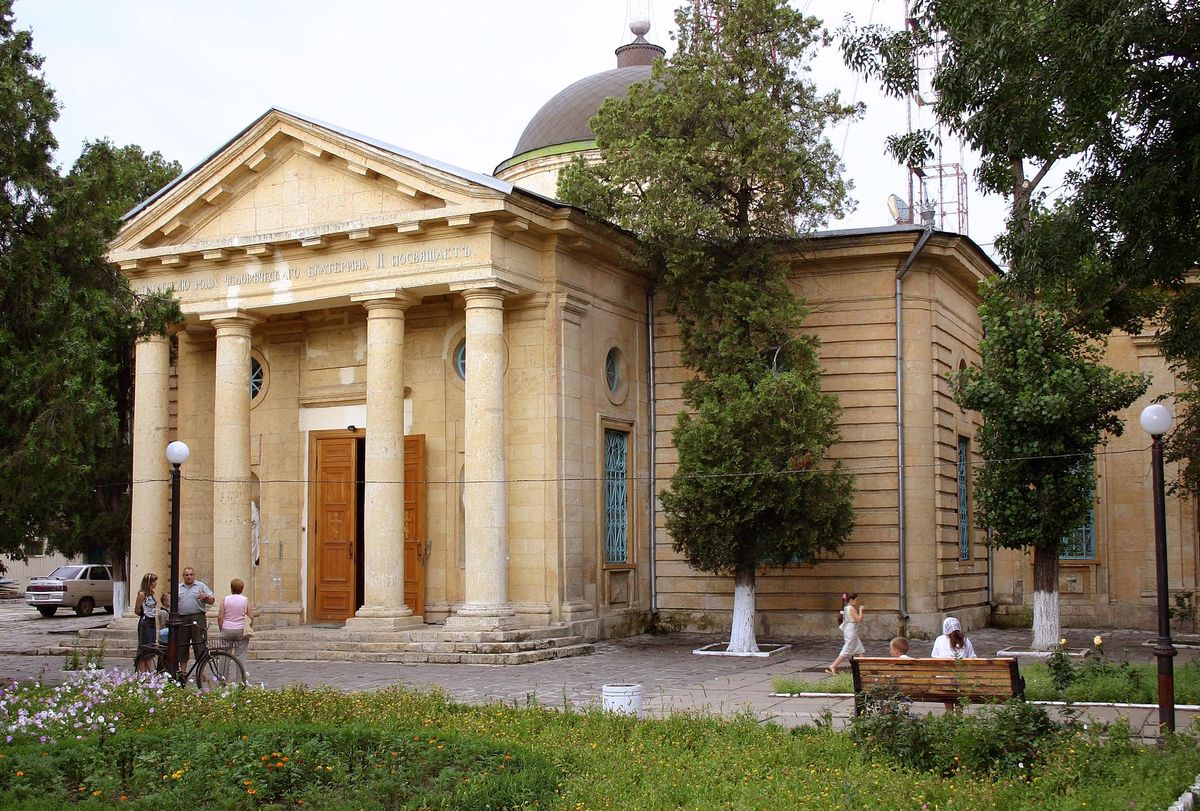A historic 18th-century cathedral in Kherson, a strategic Ukrainian city that was liberated from Russian occupation last November, has been damaged by Russian shelling.
St Catherine’s Cathedral, built in 1781-86 and inspired by both Byzantium and St. Petersburg, was also known as the burial place of Prince Grigory Potemkin who was Catherine the Great’s adviser in colonising Ukraine—until Russian forces removed his bones before retreating from the city.
The Kherson regional military administration reported in its Telegram channel on 3 August that the second strike injured rescue workers.
“At the moment when the rescuers were extinguishing the fire in the church, the Russians opened fire again,” the administration reported. “Four employees of the State Emergency Service were injured, and special equipment was also damaged.
It is the second time in two weeks that Russian fire has hit a major Orthodox cathedral in Ukraine. On 23 July the Transfiguration Cathedral in Odesa was severely damaged after Russia launched retaliatory strikes on the Black Sea port. Odesa’s city centre was inscribed as a Unesco World Heritage site earlier this year.
Kherson’s cultural heritage, as all of Ukraine’s, has reportedly been targeted by Russian forces since they invaded the country on 24 February 2022. Russia annexed part of the Kherson region in September 2022 along with four other Ukrainian regions and seized their museum collections. They are now described in Russian media as belonging to Russia. In an April interview, the director of the State Hermitage Museum, Mikhail Piotrovsky, called war “a means of cultural exchange.”
On the same day Piotrovsky’s interview was published, the ministry of culture of the Russian-occupied part of Kherson region signed an agreement with Andrei Malgin, the director of the Central Museum of Taurida in Crimea, the Black Sea peninsula annexed by Russia in 2014 on “storage of previously evacuated paintings” from Kherson’s Museum of Local History, the official Tass news agency reported. Malgin is a Putin associate and supporter of the war. The Russian occupation official overseeing culture in the annexed part of Kherson told the news agency that the “most valuable” works from the Kherson Regional Art Museum were also taken to Crimea.
The Kherson art museum has been posting regular updates about stolen works on its Facebook page, including three paintings by Ivan Aivazovsky, the master of seascapes. The museum’s longtime director, Alina Dotsenko, initially managed to hide the collection from Russian forces under the pretext of building renovation.
The Russian-installed director, Natalya Desyatova, a former cabaret singer and alleged collaborationist, now faces criminal charges and up to ten years in prison, Ukraine’s prosecutor general’s office announced on 27 July. In February, the US State Department imposed sanctions on Desyatova for overseeing “the theft of approximately 10,000 items from the museum’s collection.”
Dotsenko has been back in charge of the museum since Kherson was liberated.


